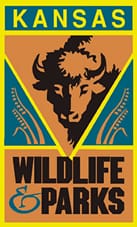Kansas Hunters Looking For An Excellent Upland Bird Season
A mild winter and ideal nesting conditions should spell more birds.

PRATT, KS —-(AmmoLand.com)- Farmers are saying it, and hunters who have driven country roads this summer and early September are backing them up: the 2009 Kansas upland bird season should very good. Now the Kansas Department of Wildlife and Parks has completed its summer brood count survey, and the results of the agency’s Upland Bird Hunting Forecast mirror the coffee-shop predictions.
Last year’s pheasant harvest of 636,000 roosters was lower than the previous year — which had been the highest in 20 years — likely due to late milo harvest and lower numbers of hunters. After a relatively mild winter, the number of pheasants going into the 2009 nesting season was slightly higher than in the spring of 2008. A cool, wet spring this year slowed development of the wheat crop, resulting in a later-than-usual harvest. Many pheasants nest in winter wheat, and the delayed harvest gave hens more time to hatch their nests and rear young.
The timing and quantity of early summer precipitation also plays a big role in game bird productivity. Success of nests and survival of young is generally best when rain comes slowly and in near average amounts during May and June. Most of the state’s primary pheasant range met that prescription. A few areas received heavy rainfall during the nesting and early brood-rearing period. Production was likely below average in these areas, which include portions of Barton, Rice, McPherson, Marion, Reno, Stafford, Republic, Washington, and Cloud counties.
Still, because habitat and weather conditions were favorable in much of Kansas’ pheasant range, the number of birds available to hunters should be better than last year in most regions. Compared to 2008, pheasant numbers will be much improved in northwest Kansas, slightly improved in southwest, northcentral, and northeast Kansas, and down in most of southcentral Kansas. The best pheasant populations will be found throughout the western two-thirds of Region 1 (northwest) and northern portions of Region 3 (southcentral) where the pheasant hunting is expected to be outstanding.
The outlook for quail is good, as well. Going into the breeding season, quail numbers were up nearly 30 percent statewide from the previous spring. The increases were the result of a mild winter with little ice and snow. Ample vegetation and mild summer weather were good for nesting and brood rearing in most locations. A few storms negatively impacted local quail numbers, but the majority of the state will have much improved quail populations from last year.
The best quail hunting will be found throughout the central part of the state from the Red Hills northward all the way to the Nebraska line and eastward to the edge of the Flint Hills. Field data and landowner reports from central and northcentral Kansas indicate that populations are higher than they have been in many years. Compared to last fall, quail numbers will be up substantially in northcentral and northeast Kansas and slightly improved from last year across the remainder of the state.
Lesser prairie chickens are found in the westcentral and southwest regions of the state. The spring prairie chicken lek survey indicated that the lesser prairie chicken breeding population was down overall from the previous year. This decline was most likely due to poor production in 2008 because of drought that affected much of southwestern Kansas. However, nesting conditions for lesser prairie chickens were improved this summer throughout their range due to timely rainfall that occurred in southwest Kansas. It is likely that populations will be up from last year, and the best hunting will be in the central and northern portions of their range.
Greater prairie chickens are found primarily in the Flint Hills and Smoky Hills. Greater prairie chicken breeding populations were down this spring in the southern Flint Hills and up farther north and west throughout the Smoky Hills. In the Flint Hills, almost all pastures were burned again this spring, and there was little vegetative cover available during the nesting season. A few small areas within the central Flint Hills were also hit with heavy June rainfall that likely hurt local production. Conditions were good for production throughout most of the northern Flint Hills and the Smoky Hills. The best greater prairie chicken hunting should be found in the northern Flint Hills westward throughout the Smoky Hills region.
A detailed “2009 Kansas Upland Bird Hunting Forecast” is available online at the KDWP website, www.kdwp.state.ks.us. Click “Hunting/Upland Birds/ Upland Bird Regional Forecast” for the complete report.
About:
The Kansas Department of Wildlife and Parks is a cabinet-level agency with a Secretary appointed by the Governor. A seven-member, bipartisan commission, also appointed by the Governor, advises the Secretary and approves regulations governing outdoor recreation and fish and wildlife resources in Kansas. The commission conducts business during regular public sessions.
